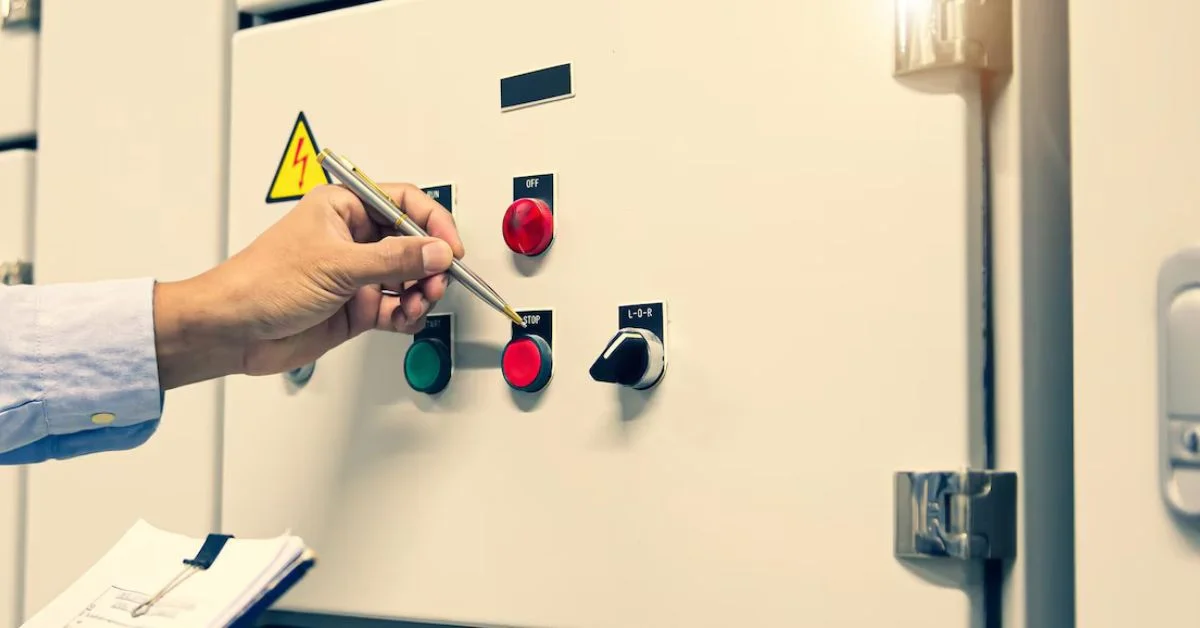HOME IMPROVEMENT
Creating a Cozy Atmosphere with Lighting

Lighting is more than just a functional component in our homes; it’s a transformative tool that plays a critical role in shaping the atmosphere and essence of a space. It’s the silent partner in the design that dictates how a room feels, ultimately making an environment feel inviting or unwelcoming. When applied judiciously, lighting can highlight textures, create illusions of space, and even influence our emotional and psychological states.
Research corroborates the notion that proper lighting setups can enhance mood, boost productivity, and promote relaxation, underlining its significance in residential and commercial settings. For a diverse selection of lighting that can cater to varied styles and functionalities, exploring resources can offer insights into the latest trends and classic designs that blend form with function.
The interplay of shadows, light intensity, and color temperatures all come together to define a room’s mood. A softly lit space can evoke warmth and intimacy, encouraging relaxation and conversation—a critical environment for areas intended for unwinding. In contrast, brighter lighting can energize a space, making it ideal for kitchens or offices where focus and alertness are key. In order to create a harmonious and inviting home environment, it is therefore essential for anybody to understand the subtle distinctions of lighting kinds and their effects.
Choosing the Right Light Fixtures
The quest for the perfect light fixtures is akin to selecting the right accessory for an outfit—it needs to blend seamlessly while enhancing the overall aesthetic. First, assess the primary purpose of the space and the tone you wish to convey. Chandeliers, for example, are not just a light source but a statement of elegance and sophistication, capable of elevating dining rooms or hallways into grand spaces. Meanwhile, floor lamps offer versatility, serving both as a direct light source for reading and as a diffuse light provider for soirées.
Another crucial factor is the style and scale of the pieces chosen. Light fixtures should complement the existing décor, ensuring a harmonious blend rather than a jarring juxtaposition. For instance, in minimalist-styled spaces, sleek and unadorned light fixtures maintain clean lines and simplicity. In contrast, in rustic or traditional interiors, ornate lamps and vintage-inspired bulbs can enhance the cozy, homely feel. The ultimate goal is to select fixtures that not only function appropriately but also contribute to the desired visual narrative of the room.
The Art of Layering Light
Layering light is an advanced and creative approach in interior design that involves integrating multiple light sources to create depth, complexity, and tailored ambiance within a room. This technique enhances the practicality of lighting and allows for adjustable mood settings to accommodate different times of the day or functions. The process begins with ambient lighting, the foundational layer providing overall illumination. This could include fixtures such as chandeliers or ceiling-mounted lights that distribute light uniformly.
The next layer involves task lighting—crafted to illuminate specific areas where activities such as reading, cooking, or working occur. Examples include table lamps in reading nooks or under-cabinet lights in the kitchen. Finally, accent lighting adds the finishing touch. This layer is pivotal for spotlighting architectural elements or artwork, creating contrasts, and showcasing personal decor or collections. By mastering the art of layered lighting, any home can achieve an adaptable, multi-dimensional feel that fosters comfort and engagement.
Incorporating Natural Light
Natural light is an abundant and beneficial asset often overlooked in architectural and interior design. Its integration can significantly increase the coziness quotient of any space, creating an inviting and lively atmosphere. Placing windows strategically or using expansive glass doors can maximize the ingress of sunlight. Additionally, employing mirrors can help bounce daylight into darker corners, amplifying its reach without additional electricity use.
Natural light doesn’t just reduce dependence on artificial lighting. It contributes to a sense of well-being and helps regulate the body’s circadian rhythms. It enhances color fidelity by revealing true colors and textures within a space, bringing rooms to life. Leveraging daylighting techniques can be instrumental in home design, promoting a healthier, more energy-efficient living environment.
The Impact of Light Color and Temperature
The color and temperature of light are powerful design elements that have the ability to shift perceptions and functionalities of space. Warm lighting, typically falling within the 2000K to 3000K range, offers a relaxing glow that is perfect for nurturing spaces like bedrooms and living rooms. It mimics the golden tones of a sunset, creating a cozy and inviting environment ideal for unwinding after a long day.
On the contrary, cooler lighting above 3500K is more akin to daylight, enhancing clarity and focus, making it ideal for kitchens, bathrooms, and workspaces where precision is essential. Understanding and manipulating these variations allows homeowners to better match the lighting to the specific demands and emotions of each space, ensuring practical functionality while maintaining aesthetic harmony.
Smart Lighting Solutions
The modern age of technology brings forth innovative smart lighting solutions that radically redefine convenience in the home. Smart lighting features, such as adaptive brightness, color-changing capabilities, and programmable settings, provide an unmatched level of customization. Through smartphone apps or voice commands, homeowners can easily adjust settings, tailoring the lighting to suit specific moods, times of the day, or activities.
These smart systems also offer enhanced energy efficiency, as they often include features such as motion sensors and auto-dimming, which reduce electricity consumption and promote sustainability. For eco-conscious homeowners, smart lighting is both a stylish and responsible choice, allowing for significant savings on energy bills while reducing environmental impact.
Resources:
HOME IMPROVEMENT
Dangerous Electrical DIY Mistakes

DIY home projects are a great way to save money and broaden your own skills, however, DIY can quickly turn perilous when electrics are involved. There are over 28 million DIYers in the UK, all of whom have the intention of improving their homes, however, there are some very real risks involved.
With electrical DIY, improper work can lead to short-circuiting, electrocution and even house fires. Here are some dangerous electrical DIY mistakes you should aim to avoid.
Cutting Wires Too Short
One common pitfall is cutting wires too short. This mistake can lead to poor connections and junction box overloads which heightens the risk of electrical fires. Sufficient wire length ensures that your connections are secure and aids future repairs or adjustments. This is all without the need to splice additional wire segments, which can compromise the integrity of the electrical system.
Having the right tools for electrical cutting is essential during this task. Hydraulic cable cutters not only make the job easier but also reduce the chance of electrocution and shorting.
Leaving Sockets and Switches Loosely Connected
Loose connections in sockets and switches can lead to arcing, which is a type of electrical discharge that generates heat and can ignite surrounding materials. Loose connections can also allow live wires to wiggle loose, exposing them to your fingers.
Ensuring that all connections are tight and secure is fundamental to preventing electrical fires and maintaining an efficient electrical system.
To ensure safe and efficient handling of complex electrical systems, it’s highly recommended to consult professional services like Electronic Power Design. Their expertise in electrical systems integration can help prevent issues such as loose connections and overloaded electrical boxes, reducing the risk of fires or shocks. You can learn more about their services here.
Overfilling Electrical Boxes
Cramming too many wires into an electrical box can cause overheating and electrical failure. Each box is designed to hold a certain number of wires to prevent overheating and allow for safe operation.
Overfilling these boxes not only risks short circuits but also makes future maintenance more challenging.
Wiring a Circuit Breaking Device Backwards
Improper installation of circuit breakers or wiring them backward can compromise the safety mechanisms designed to protect your home from electrical overloads and shorts. This can happen in RCBO or MCB devices in the UK or a GFCI in the US and can potentially lead to catastrophic consequences such as fires and lethal shocks.
Installing Cables Without a Clamp
Cable clamps are not an optional accessory, these tools are a necessity. They secure the cable to the box and protect the insulation from damage. Without a clamp, cables can move freely, leading to wear on the insulation and potentially exposing live wires. This oversight can lead to overheating, short circuits, fires and electrical shocks if touched.
HOME IMPROVEMENT
Clean Sweep: Mastering the Art of House Cleaning

Introduction
In today’s fast-paced world, maintaining a clean and organized home is often overlooked amidst hectic schedules and busy lifestyles. However, the significance of a clean living space goes beyond mere aesthetics. It contributes to our physical health, mental well-being, and overall quality of life. In this comprehensive guide, we will delve into the art of house cleaning, offering practical tips, techniques, and insights to help you achieve a sparkling, clutter-free home environment.
Getting Started with House Cleaning
To embark on your house cleaning journey, it’s essential to establish a structured approach. Begin by crafting a cleaning schedule tailored to your needs and lifestyle. Determine which areas of your home require regular attention and allocate specific tasks accordingly. Additionally, ensure you have the necessary cleaning supplies on hand, including cleaning agents, tools, and equipment.
Room-by-Room Cleaning Guide
Each room in your home presents unique cleaning challenges and requirements. We’ll explore effective cleaning strategies for key areas such as the kitchen, bathroom, living room, and bedroom. From sanitizing kitchen surfaces to organizing closet spaces, you’ll discover practical tips to maintain cleanliness and order throughout your home.
Deep Cleaning Techniques
In addition to routine maintenance, periodic House Cleaning in Fort Collins is essential to address stubborn dirt, stains, and grime. Learn expert techniques for revitalizing carpets, upholstery, windows, and more. Whether tackling accumulated dust or banishing pesky stains, you’ll uncover effective solutions to restore your home’s pristine condition.
Eco-Friendly Cleaning Solutions
Concerned about the environmental impact of conventional cleaning products? Discover the benefits of eco-friendly alternatives derived from natural ingredients. We’ll share DIY cleaning recipes and eco-conscious cleaning brands to help you minimize your carbon footprint while keeping your home clean and healthy.
Time-Saving Cleaning Hacks
Short on time? Fear not! Our time-saving cleaning hacks will streamline your cleaning routine without compromising on results. From quick cleaning methods for busy weekdays to multitasking strategies, you’ll learn how to maximize efficiency and achieve a spotless home in less time.
Dealing with Clutter and Organization
Clutter can detract from the beauty and functionality of your living space. Explore practical decluttering strategies and organization tips to reclaim space and create a harmonious home environment. Whether you’re tackling overflowing closets or optimizing storage solutions, we’ll guide you through the process of simplifying your surroundings.
Maintaining a Clean Home Routine
Consistency is key to maintaining a clean and orderly home. Learn how to incorporate daily, weekly, and monthly cleaning tasks into your routine to prevent accumulation and ensure long-term cleanliness. By cultivating simple yet effective habits, you’ll effortlessly uphold the cleanliness of your home.
Hiring Professional Cleaning Services
In some instances, outsourcing cleaning tasks to professionals may be the optimal solution. Discover when to consider hiring professional cleaning services and how to select reputable cleaning companies. Whether you need occasional assistance or regular maintenance, professional cleaners can provide invaluable support in keeping your home immaculate.
Conclusion
In conclusion, house cleaning is not merely a chore but a cornerstone of a healthy and harmonious lifestyle. By implementing the tips and techniques outlined in this guide, you’ll transform your home into a sanctuary of cleanliness and comfort. Embrace the journey towards a tidier, happier living space and reap the countless benefits it brings.
FAQs
How often should I deep clean my home?
- Deep cleaning frequency depends on various factors such as household size, lifestyle, and level of cleanliness desired. Generally, deep cleaning every three to six months is recommended for maintaining a healthy and hygienic living environment.
What are the essential cleaning supplies every household should have?
- Essential cleaning supplies include multipurpose cleaner, disinfectant wipes, microfiber cloths, scrub brushes, vacuum cleaner, mop, bucket, and gloves. These items facilitate effective cleaning of various surfaces and areas within the home.
Are natural cleaning products as effective as conventional ones?
- Yes, natural cleaning products can be just as effective as conventional ones, if not more. Ingredients such as vinegar, baking soda, and lemon have powerful cleaning properties and are safer for the environment and human health. They effectively remove dirt, stains, and odors without harmful chemicals.
How can I maintain cleanliness in high-traffic areas of my home?
- High-traffic areas such as entryways, hallways, and living rooms require frequent attention to prevent dirt buildup. Implementing measures such as placing doormats at entrances, enforcing a no-shoes policy indoors, and regular vacuuming or sweeping can help maintain cleanliness in these areas.
What are the advantages of hiring professional cleaning services?
- Professional cleaning services offer numerous benefits, including expertise in deep cleaning techniques, time savings, and convenience. They use professional-grade equipment and products to achieve superior results, freeing homeowners from the burden of intensive cleaning tasks.
HOME IMPROVEMENT
Get Your Grout to Gleam With These Easy-To-Follow Tips

Did you know that grout can harbor mold and mildew if not properly cleaned and maintained?
By following a few simple tips, you can transform your grout from dull to dazzling.
With just a few easy-to-follow steps, you can have your grout looking as good as new in no time.
So, are you ready to give your grout the gleam it deserves?
Assess Your Grout Condition
To determine the condition of your grout, start by inspecting the color and texture for any signs of wear or discoloration. Over time, grout can become discolored or worn, especially in high-traffic areas like the kitchen or bathroom. If you notice any cracks, stains, or areas where the grout has worn away, it may be time for a tile and grout service. A professional tile & grout service provider can help restore the appearance of your grout and prevent further damage.
Regular maintenance with a tile and grout cleaner can also help in keeping your grouts in top condition. Using a specially formulated cleaner designed for grouts can help remove dirt, mold, and mildew buildup. By regularly cleaning your grouts, you can prolong its lifespan and keep it looking fresh and clean.
However, for stubborn stains or extensive cleaning needs, consider professional tile and grout cleaning. These services can tackle tough jobs and restore your tile and grout to its original beauty.
Gather Cleaning Supplies
Inspecting your grout condition is crucial before proceeding to gather the necessary cleaning supplies for maintenance. Once you’ve assessed the grouts and identified the areas that need attention, it’s time to gather your cleaning supplies.
Start by checking your cleaning cabinet for items like a grout brush, scrubbing sponge, white vinegar, baking soda, hydrogen peroxide, and a bucket. These are common household items that can effectively clean grout without causing damage. If you don’t have these supplies on hand, make a quick trip to the store to pick them up.
Additionally, consider investing in a tile and grout cleaner specifically formulated for tougher stains if your grout requires extra care. Having all the necessary supplies ready before you start cleaning will make the process smoother and more efficient. Once you have everything gathered, you’ll be prepared to tackle the grime and restore your grout to its former glory.
Choose the Right Cleaning Method
For effective grout cleaning, consider selecting the appropriate cleaning method based on the type of grime and stains present. Different cleaning methods are more effective for specific types of grouts dirt and stains.
For general dirt and mild stains, a mixture of baking soda and water can be a gentle yet efficient option. This method is especially useful for maintenance cleaning.
If your grouts is plagued with tougher stains like mold or mildew, a mixture of equal parts water and vinegar can help tackle these more stubborn marks. Vinegar is known for its disinfecting properties and can help remove mold and mildew effectively.
For tougher stains like grease or oil, a paste made of baking soda and hydrogen peroxide can be a powerful solution. The bubbling action of hydrogen peroxide combined with the abrasive texture of baking soda can work wonders on these stubborn stains.
Choose the cleaning method that aligns best with the specific grime and stains you’re facing for optimal results.
Scrub and Clean Thoroughly
For a thorough grout cleaning process, ensure you scrub and clean diligently to eliminate all traces of dirt and stains effectively. Start by preparing a cleaning solution using water and a suitable grouts cleaner or a mixture of baking soda and vinegar for a natural alternative. Apply the solution generously onto the grouts lines and let it sit for a few minutes to loosen the dirt.
Next, take a stiff-bristled brush or an old toothbrush and scrub the grouts lines vigorously. Focus on areas with visible stains or discoloration, applying extra pressure as needed. Work in small sections to ensure thorough cleaning and pay attention to corners and edges where grime tends to accumulate.
After scrubbing, use a damp cloth or sponge to wipe away the cleaning solution and dirt residue. Rinse the cloth or sponge frequently to prevent dirt from spreading back onto the grouts. Finally, dry the grout lines with a clean towel to reveal a sparkling, clean finish.
Scrubbing and cleaning diligently is key to achieving gleaming grouts that enhances the overall appearance of your tiled surfaces.
Maintain Grout’s Shine
Wondering how to keep your grout looking shiny and well-maintained? To maintain your grout’s shine, regular upkeep is key. After cleaning your grouts thoroughly, apply a grout sealer to protect it from dirt and stains. This will also help in preserving its shine and preventing discoloration. Make sure to reapply the sealer as recommended to ensure long-lasting protection.
In addition to sealing, routine cleaning is essential for maintaining the shine of your grouts. Use a non-acidic cleaner and avoid harsh chemicals that can dull the grouts over time. Regularly wiping down your grouts lines with a damp cloth can prevent dirt buildup and keep them looking fresh.
Another tip to maintain your grout’s shine is to avoid using abrasive tools or scrubbers that can scratch the surface. Opt for gentle cleaning methods to preserve the shine and integrity of your grouts. By following these simple steps, you can ensure that your grouts remains shiny and well-maintained for years to come.
Conclusion
Now that you’ve learned how to get your grout to gleam, maintaining its shine is as easy as keeping up with regular cleaning. By assessing the condition, gathering the right supplies, choosing the proper cleaning method, and scrubbing thoroughly, you can ensure your grouts stays looking its best. While you can tackle grouts cleaning as a DIY project, it’s important to note that DIY methods may not be specific to your surface or the issue at hand. This means that the real underlying problem might not be resolved. Therefore, it’s always better to seek the help of a professional who can provide targeted solutions for your grout’s unique needs.

 TECHNOLOGY4 months ago
TECHNOLOGY4 months agoBlog Arcy Art: Where Architecture Meets Art

 ENTERTAINMENT1 week ago
ENTERTAINMENT1 week agoExploring the Kristen Archives: A Treasure Trove of Erotica and More

 ENTERTAINMENT4 days ago
ENTERTAINMENT4 days agoKiss KH: The Streaming Platform Redefining Digital Engagement and Cultural Currents

 LIFESTYLE4 months ago
LIFESTYLE4 months agoThe Disciplinary Wives Club: Spanking for Love, Not Punishment

 LIFESTYLE1 week ago
LIFESTYLE1 week agoWho Is Sandra Orlow?

 GENERAL4 months ago
GENERAL4 months agoWhat are stories of male chastity? A Comprehensive Guide

 EDUCATION4 days ago
EDUCATION4 days agoLingrohub Platform: A Complete Student Access Guide

 ENTERTAINMENT4 weeks ago
ENTERTAINMENT4 weeks agoMonkeyGG2: Your Personal Gaming Hub










